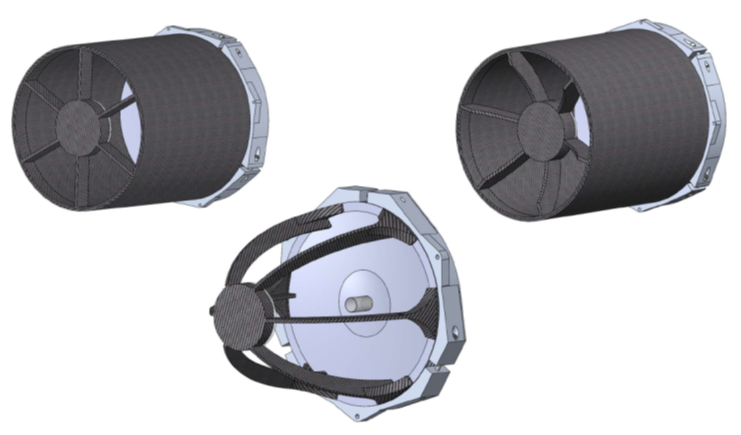LLNL developed a solid monolith telescope construction approach (U.S. Patent No. 9720223, IL-12599) that has driven a new paradigm for high-performance, multi-aperture space telescopes at previously unheard-of costs, mainly due to their intrinsic robustness. Unfortunately, solid monoliths mass becomes excessive beyond half-meter aperture, approaching 1000 kg at meter-scale. What is needed is a new construction approach to scale the advantages of solid monolithic telescopes to meter-scale and beyond.
The approach is to use foundational materials science, structural design, thermal analysis, optic fabrication, and space systems engineering, and to use optimize them through large-scale simulation to realize meter-scale telescopes at 10X cost reduction. LLNL’s folded Gregorian design integrates all alignment sensitive components into one static monolithic system. Like solid-monoliths, these composite monoliths eliminate all dynamic degrees of freedom. The entire assembly consists of (1) primary/secondary mirrors, (2) focal plane array, and an integrated Fold-Mirror strut.
Image Caption: Various monolith design concepts
- Reduce costs by eliminating risk associated with high sensitivity optomechanical components.
- Greater robustness and reliability by eliminating high-precision mechanical structures.
- Reduce SWaP (size, weight and power) factors
- National security
- Free-space optical communications
- Astrophysics
- High-resolution space imagery
Current stage of technology development: TRL 2
LLNL has filed for patent protection on this invention.
Related patents:
- U.S. Patent No. 9,720,223 Integrated Telescope Assembly issued 08/01/17 (https://image-ppubs.uspto.gov/dirsearch-public/print/downloadPdf/9720223) - IL-12599.
- U.S. Patent Application No. 2024/0383798 Systems and Methods for Additively Manufacturing High Strength and Stiffness Fiber-Reinforced Inorganic Glass Composite Structures filed 11/21/24 (https://image-ppubs.uspto.gov/dirsearch-public/print/downloadPdf/20240383798) – IL-13792.
- U.S. Patent Application No. 19/067,792 Composite Meter-Class Monolithic Space Telescopes filed 02/28/2025 - IL-13823.


